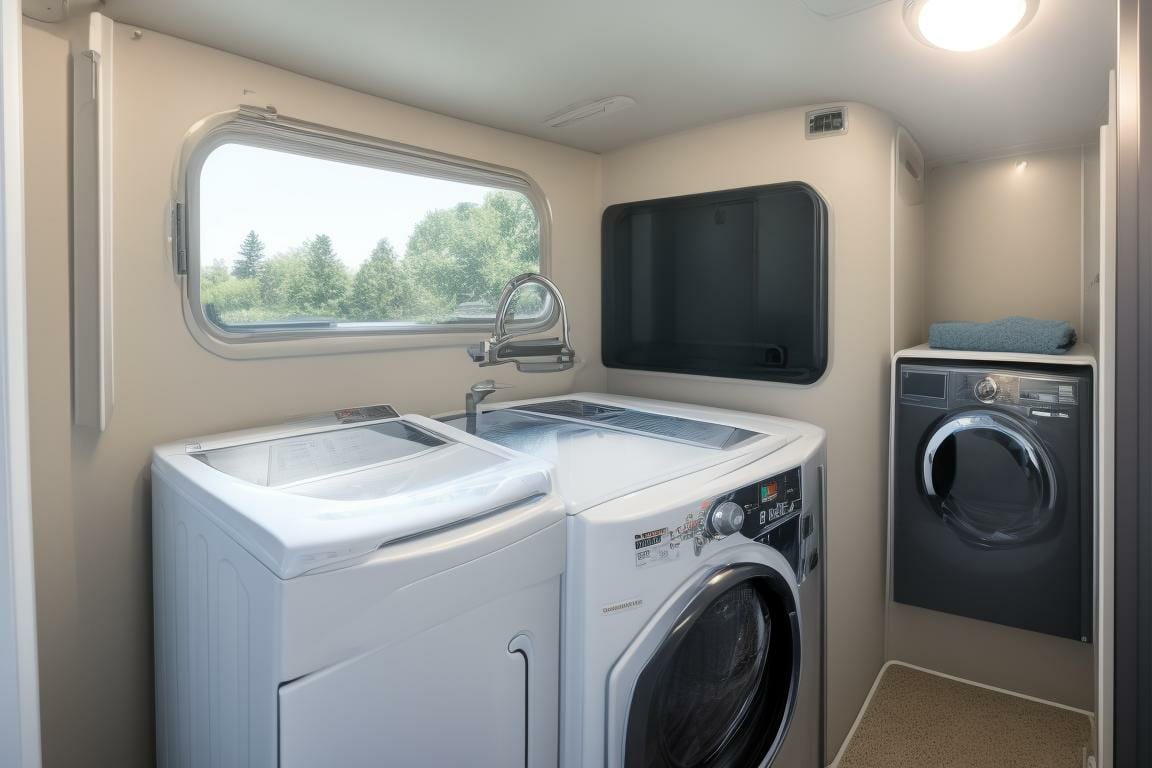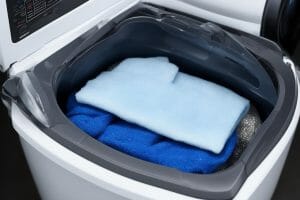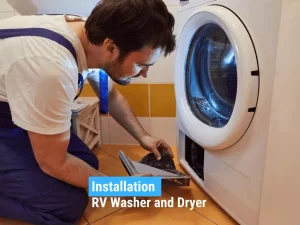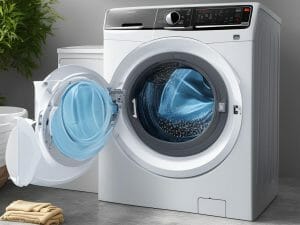RV Washer and Dryer Venting Requirements and Tips
Hey there, fellow RV enthusiast!
Are you tired of dealing with venting issues when it comes to your washer and dryer? Well, fear not, because we’ve got you covered!
In this article, we’ll dive into the world of RV washer and dryer venting requirements and share some valuable tips to help you maintain efficiency.
From understanding the venting requirements to troubleshooting common issues, we’ll provide all the knowledge you need to keep your laundry appliances running smoothly.
So, let’s get started and make your RV feel like a true home on wheels!
Key Takeaways
Understanding the Venting Requirements
To understand the venting requirements for your RV washer and dryer, you’ll need to familiarize yourself with the specific guidelines provided by the manufacturer. Venting regulations are in place to ensure the safe and efficient operation of your appliances.
The venting guidelines will outline the proper placement and installation of the venting system. Typically, the vent should be located on an exterior wall of the RV, allowing for the proper airflow and ventilation. It is important to follow these guidelines to prevent any potential hazards, such as the buildup of lint or moisture.
Venting Options for RV Washers and Dryers
Make sure you consider the different options available for venting your RV’s washer and dryer. Proper venting is essential to ensure efficient and safe operation of your appliances.
Here are some venting options and installation tips to help you make the right choice:
Proper Vent Installation for RV Laundry Appliances
When installing your RV’s laundry appliances, it’s crucial to properly install and seal the vents to ensure efficient airflow and prevent leaks. Venting challenges can arise due to limited space and the need to maintain the structural integrity of your RV. However, there are solutions available to overcome these challenges.
One option is to use compact and flexible venting systems that can be easily maneuvered into tight spaces. These systems are designed to maximize airflow while minimizing the risk of leaks. Another solution is to utilize vent covers that provide protection from the elements while allowing for adequate ventilation. These covers can be installed on the exterior of your RV to ensure proper venting without compromising the integrity of your vehicle.
By implementing these venting solutions, you can effectively address any challenges that may arise during the installation of your RV’s laundry appliances. This will not only ensure efficient airflow but also provide peace of mind, knowing that your vents are properly sealed and functioning optimally.
| Venting Challenges | Venting Solutions |
|---|---|
| Limited space | Compact and flexible venting systems |
| Structural integrity | Vent covers for protection and ventilation |
| Risk of leaks | Proper sealing and installation techniques |
Tips for Maintaining Vent Efficiency in an RV
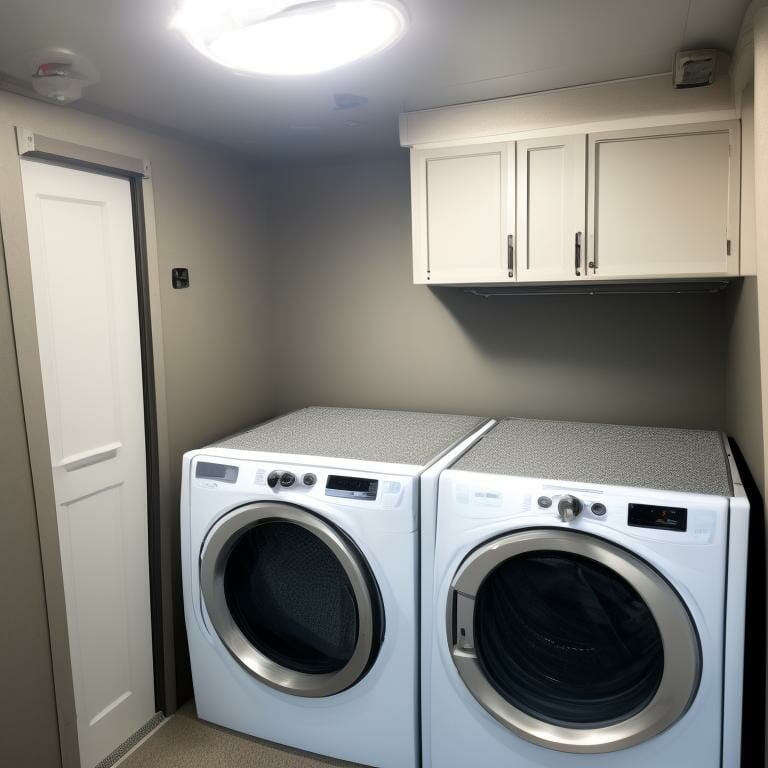
Maintaining efficient vent airflow in your RV is crucial for preventing issues such as mold and excessive humidity. To ensure maximum airflow and keep your RV fresh and comfortable, follow these cleaning and maintenance techniques:
Troubleshooting Venting Issues in RV Washer and Dryer Systems
To troubleshoot any venting issues in your RV washer and dryer systems, start by checking for any obstructions or blockages in the vent hoses.
Common venting problems can include clogged vent hoses, improper installation, or damaged vent covers.
If you notice that your clothes are not drying properly or there is a musty smell in your RV, it may be a sign of a venting issue.
Begin by inspecting the vent hoses for any debris or lint buildup. Use a flashlight to check for any blockages and remove them if necessary.
Make sure that the vent hoses are properly connected and that the vent covers are not damaged.
Additionally, ensure that the vent hoses are not kinked or crushed, as this can restrict airflow.
Frequently Asked Questions
Can I Use a Regular Household Dryer Vent for My RV Washer and Dryer?
You can use a regular household dryer vent for your RV washer and dryer, but there are alternative venting options to consider. Let’s explore the pros and cons of using a regular household dryer vent.
How Often Should I Clean the Venting System in My RV Washer and Dryer?
To maintain a properly functioning venting system for your RV washer and dryer, it is important to regularly clean it. Cleaning should be done at least once a year to prevent clogs and ensure optimal performance.
Can I Install a Ventless Washer and Dryer in My RV?
Yes, you can install a ventless washer and dryer in your RV. This is a great alternative to venting for RV laundry appliances, as it eliminates the need for external venting.
What Are the Potential Consequences of Not Following the Proper Venting Requirements for RV Laundry Appliances?
Not following proper venting requirements for your RV laundry appliances can lead to potential risks, such as increased humidity, mold growth, and poor air quality. It’s important to prioritize proper ventilation for a safe and comfortable RV living experience.
Are There Any Specific Safety Measures I Should Take When Venting My RV Washer and Dryer?
When venting your RV washer and dryer, it’s important to take specific safety measures. Follow these best practices to ensure proper venting and reduce the risk of potential hazards.
Conclusion
In conclusion, now that you’re aware of the venting requirements and options for RV washers and dryers, you’re well-equipped to keep your laundry appliances running efficiently in your RV.
Remember, a well-ventilated system is the key to preventing issues and ensuring optimal performance. So, don’t let your laundry dreams go up in smoke.
Stay on top of your venting game, and let your RV laundry experience be as smooth as a freshly pressed shirt.

